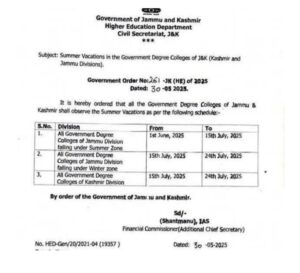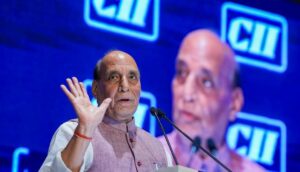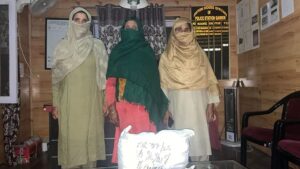Steps taken by the Government to protect school going children against the harmful effects of tobacco products

As per the information received from Ministry of Health and Family Welfare, the National Fact Sheet of the Global Youth Tobacco Survey (GYTS-4), 2019, conducted among 13 – 15 year age group school going children, the median age at initiation of cigarette and bidi smoking, and smokeless tobacco use were 11.5 years, 10.5 years and 9.9 years respectively.
As per the information received from Ministry of Health and Family Welfare, various steps have been taken by the Government to protect school going children against the harmful effects of tobacco products. As per Section 6 (a) of Cigarettes and Other Tobacco Products (Prohibition of Advertisement and Regulation of Trade and Commerce, Production, Supply and Distribution) Act, 2003 (COTPA, 2003) read with Cigarettes and Other Tobacco Products (Prohibition of Advertisement and Regulation of Trade and Commerce, Production, Supply and Distribution) Amendment Rules, 2011, there is prohibition on sale of tobacco products to and by persons below the age of 18 years and as per Section 6 B. of COTPA, 2003, there is prohibition on sale of tobacco products in an area within a radius of one hundred yards of any educational institution.
Ministry of Health and Family Welfare has also issued the “Guidelines for Tobacco Free Educational Institution (Revised)” for effective implementation of Section-6 of COTPA, 2003. States are taking effective measures with Education departments for implementation of these Guidelines. Regular and sustained awareness is carried out about the adverse effects of tobacco usage on health through various anti-tobacco campaigns.
Public Health is a State subject and the primary responsibility for enforcement of the Act, lies with the State Governments for effective implementation of the provisions of COTPA, 2003.
As per the information received from Department of School Education, Ministry of Education the Guidelines for Tobacco Free Educational Institution were circulated to all States/UTs by Department of School Education and Literacy for effective implementation of these guidelines in all educational institutions vide letter dated 17.09.2019 and reiterated vide letters dated 18.12.2020, 08.01.2021 and 07.07.2022. These guidelines lay down the roles &responsibilities of different stakeholders’ viz. Central Government: State Governments: Educational Institutions and Civil Society Organization for making Educational Institution tobacco free. Public Health is a State subject and the primary responsibility for enforcement of the Act lies with the State Governments.
Further, under the School Health and Wellness Programme (SHP) under Ayushman Bharat, special classes and experiential learning activities like Role Play, Folk Dance, Poster making, Creative writing, Debate, Discussion and Skill Building activities are organised with school students for awareness generation on issues related to tobacco, drug / substance misuse. The Central Board of Secondary Education (CBSE) has introduced Life-Skills education as a part of curriculum in the schools affiliated to it. Life-skills help students to abstain from tobacco and other addictive substances. CBSE schools follow textbooks of NCERT which have content related to drug abuse including the ill effects of tobacco in the syllabus of Classes VIII, XI and XII. CBSE has also been issuing periodic circulars to schools affiliated to it for sensitizing all students about ill-effects of tobacco.
In addition, ‘Guidelines on School Safety and Security’ developed by the Department, inter-alia, contain provisions for fixing the accountability of school management, various stakeholders and different departments in ensuring the safety and security of children studying in Government Schools, Government-Aided Schools and Private Schools. These guidelines are advisory in nature and inter-alia include roles & responsibility of School/School Management for taking necessary action in case sale of tobacco or any other intoxicating substances is noticed within 100 yards of the school premises.
Further, as per the information received, National Commission for Protection of Child Rights (NCPCR) in collaboration with Narcotics Control Bureau (NCB), and concerned ministries and stakeholders has developed a “Joint Action Plan on “Prevention of Drugs and Substance Abuse Among Children and Illicit Trafficking” in 2021. This is a public policy document and a framework to wean away children from drug abuse and to stop selling of drugs in surrounding areas of schools/colleges, educational institutions, child care institutions through convergent actions in a time bound manner as well as to adopt an holistic approach to address the issue of use of drugs and substances amongst the children in the country. It also adopts some of the strategic intervention to prevent the reach of pharmaceutical drugs, intoxicating substance and any other items used as intoxicants by the children.
One of the main features of this Joint Action Plan is constitution of “Prahari Clubs” in the Schools/educational institutions, as several types of student’s clubs and programmes are being run in schools, colleges and educational institutions. The Joint Action Plan is available on NCPCR’s website at the followingLink:
This information was given by the Minister of Women and Child Development Smt. Smriti Zubin Irani, in a written reply in Rajya Sabha today.





